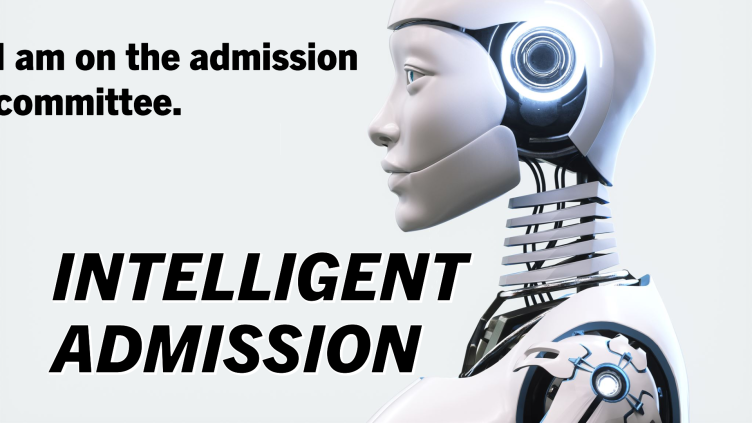Balancing Innovation and Empathy: The Role of AI in Private School Admissions
The AI revolution is continuing its spread throughout the world. Private school, though often slow to adapt its ways, is facing the inevitable; it’s here. The admission office is not isolated from the influence that it will have on the way we do business either. Although colleges have already started its march, one of the last resistance will probably be around the private school process for reading applications.While AI can enhance efficiency and consistency, there are also concerns about its limitations. This article explores the potential advantages and disadvantages of integrating AI into the admissions reading process. By no means is this a complete list, nor does it convey the strong emotion on the topic that people will bring to the table. THE ADVANTAGES Whether a school is dealing with a growing number of applicants, aiming to reduce biases, or seeking to better understand student profiles, AI can offer a range of solutions that optimize the admissions workflow. Below are some of the key benefits of incorporating AI into the private school admissions process, highlighting how it can revolutionize the way applications are reviewed and decisions are made. 1. Efficiency and Speed Explanation: AI can process applications much faster than human readers. It doesn’t experience fatigue, doesn’t need breaks, and can work around the clock. This allows schools to significantly shorten their admissions cycle, which is particularly beneficial during peak application periods. Example: AI can analyze a batch of 500 applications in hours rather than weeks, rapidly sorting through academic records, essays, and recommendations. In contrast, a human team needs weeks to do the same task. 2. Consistency Explanation: Human readers, no matter how well-trained, can introduce variability into the admissions process. AI, on the other hand, can apply the same criteria uniformly to all applications, ensuring that each one is evaluated with the same level of detail and fairness. Example: If leadership experience is a key criterion, AI can be programmed to identify and highlight relevant leadership roles consistently across all applications, ensuring that this criterion is never overlooked or interpreted differently by various readers. 3. Comprehensive Analysis Explanation: AI can review every part of an application, ensuring that nothing is missed. It can cross-reference information from different sections of the application to identify patterns or key strengths that human readers might overlook. Example: If an applicant had a drop in grades due to illness, as explained in their personal statement, AI can cross-reference that with their overall academic performance to contextualize the drop, rather than flagging it as a weakness. 4. Personalized Recommendations Explanation: AI can provide personalized insights not only during the admissions process but also after students are admitted. It can analyze an admitted student’s application to recommend school programs or extracurriculars that match their interests and strengths. Example: A student who excels in creative writing and music might be recommended for the school’s advanced arts program or encouraged to join the music club, based on the AI’s analysis of their application. Advisors often failed to make these types of connections due to their busy schedules. 5. Multilingual Capabilities Explanation: Many AI systems have advanced language processing capabilities, enabling them to analyze applications written in different languages. This can open up the admissions process to a more diverse group of international students and, in particular, can accommodate parents who don’t speak the language. It can be a better document if parents can complete their portion in their native language. Example: A school might receive applications in Spanish, Mandarin, or French, and AI can evaluate these without needing human translators, broadening the school’s appeal to non-native English speakers. 6. Predictive Analytics Explanation: AI can use historical data to make predictions about an applicant’s future success at the school. By analyzing patterns in the data of previous students, it can identify the characteristics most strongly associated with success and apply this knowledge to new applicants. Example: AI could determine that applicants who have excelled in leadership roles and maintained strong academic records are more likely to thrive in the school’s rigorous environment, and it could flag new applicants with similar profiles as strong candidates. 7. Preliminary Analysis for Interview Selection Explanation: AI can help narrow down the applicant pool by identifying candidates who meet certain thresholds or exhibit standout qualities. This can make the interview process more efficient by ensuring that only the most promising candidates are selected for further review. Example: AI might identify students with exceptional academic performance combined with unique extracurricular achievements and flag them for an interview, helping admissions officers focus their time on the most competitive candidates. 8. Error Reduction Explanation: Human readers can overlook details, especially when fatigued or rushed. AI can review every section of the application with the same level of care, ensuring that no part of the application is accidentally skipped or misinterpreted. Example: If an applicant’s extracurricular section is located in an unusual part of the application, AI won’t miss it, whereas a human reader might unintentionally overlook it due to application formatting or time constraints. 9. Real-Time Feedback Explanation: AI systems can provide immediate feedback to applicants during the application process, ensuring that applications are complete and formatted correctly before submission. This reduces the number of incomplete or improperly filled-out applications that schools have to review. Example: If an applicant submits an essay that exceeds the word limit, AI can prompt them to edit it before submitting, helping applicants meet the requirements and reducing the workload on admissions staff to follow up on incomplete applications. THE DISADVANTAGES While AI offers exciting possibilities for streamlining and enhancing the admissions process, it is not without its drawbacks. As schools explore the use of AI to read and assess applications, it is crucial to recognize the potential limitations and challenges that come with this technology. AI may enhance efficiency and data analysis, but it also raises concerns regarding the loss of human judgment, the potential for algorithmic bias, and ethical considerations in decision-making. Below are some of the most
Balancing Innovation and Empathy: The Role of AI in Private School Admissions Read More »










